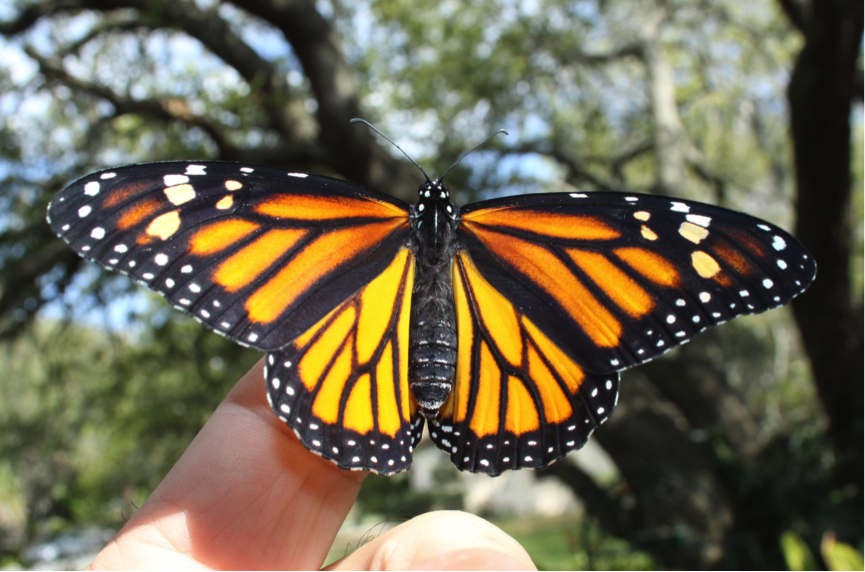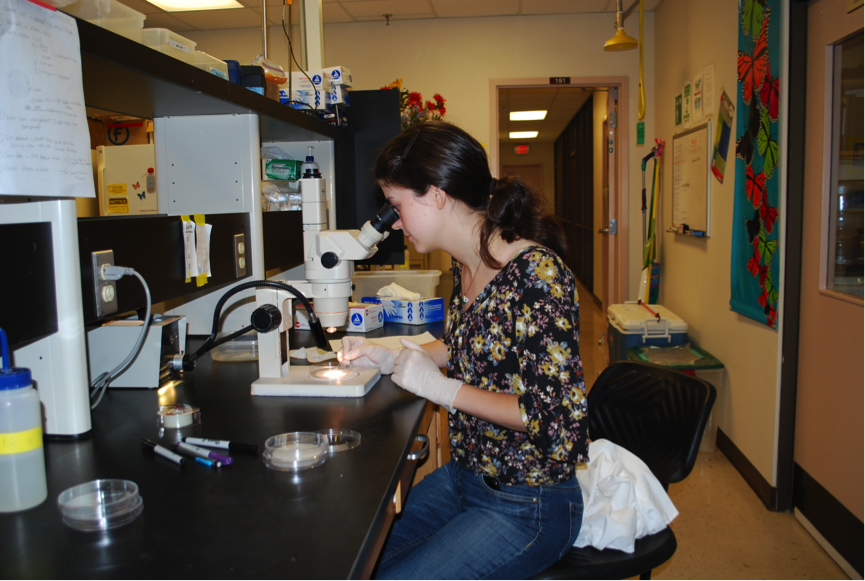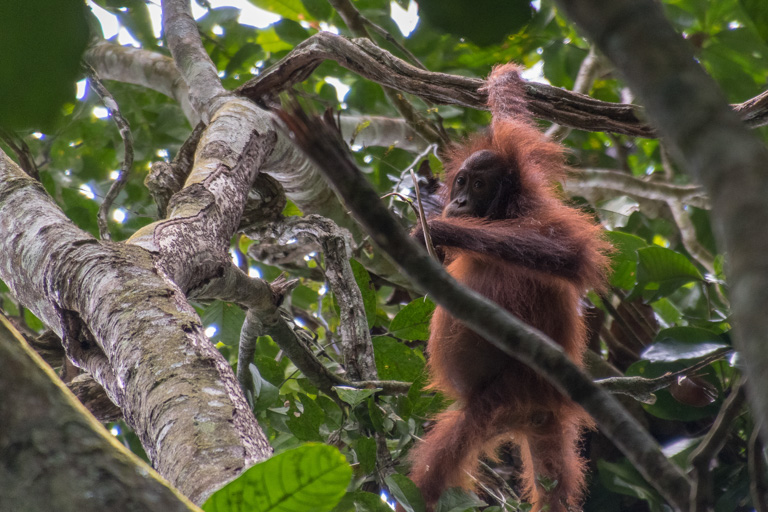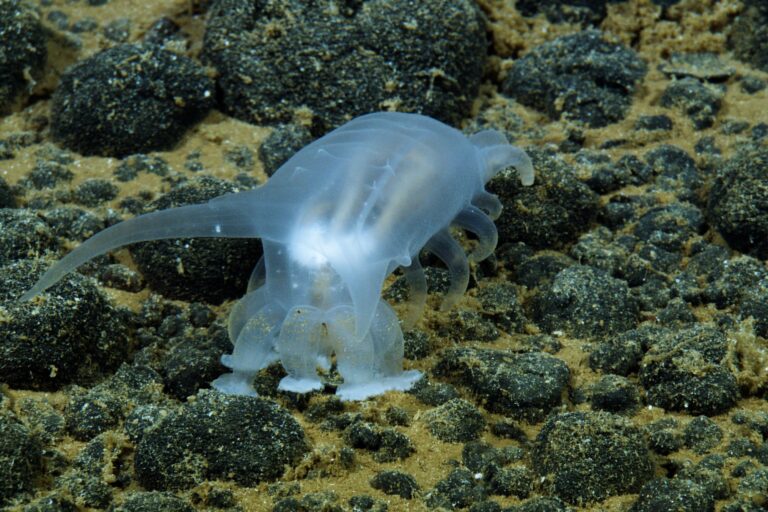- Scientists believe that increased plantings of Asclepias curassavica, commonly known as ‘tropical milkweed’, in the U.S. South has prompted a population of formerly migrating Monarchs to overwinter.
- These overwintering populations of Monarchs unexpectedly suffer from higher rates of disease and parasitic infection, as well as altering infectious disease dynamics among still-migrating Monarchs.
- For now, Southeasterners wishing to support Monarchs should be sure to only plant native milkweeds, avoiding the tropical varieties.

A recent study concludes that a new, overwintering population of the Monarch butterfly (Danaus plexippus) in the Southern U.S. is the direct result of ideal breeding conditions created by increased plantings of a non-native tropical milkweed (Asclepias curassavica) — plantings that are cultivated by gardeners attempting to aid the migrating butterflies.
Unfortunately, these overwintering populations of Monarchs unexpectedly suffer from higher rates of disease and parasitic infection, and pose “an additional emerging threat to the long term viability of migratory Monarchs by altering infectious disease dynamics among still-migrating Monarchs,” says a research paper published in the journal Proceedings of the Royal Society B.
Surprising detrimental results
The scientists from the University of Georgia who performed the study believe that increased plantings of Asclepias curassavica, commonly known as ‘tropical milkweed’, in the U.S. South has prompted a population of formerly migrating Monarchs to overwinter.
This overwintering trend has been occurring for decades, as more and more concerned gardeners plant the readily available tropical milkweed. Native milkweeds die back in autumn, giving a clear signal for butterflies to move south. However, tropical milkweed does not, providing a ready food source and perfect breeding habitat for the butterflies, and, unfortunately, their diseases.

Between 2011 and 2013 the study team used a combination of field monitoring and citizen science data to test Monarchs in their summer migratory grounds throughout North America, overwintering habitat in Mexico, and in the Southern U.S. overwintering group for the protozoan parasite Ophryocystis Elektroscirrha (OE).
Study lead author and doctoral student Dara Satterfield, and her team, collected the data with a very hands-on approach: “In total, our team of scientists and volunteers tested nearly 6,000 Monarchs for this study… testing involves pressing clear tape against the Monarch’s abdomen to collect a sample to examine for infection, and does not hurt the Monarchs.”
The scientists were surprised by the results; infection frequency among sedentary Monarchs was 5-9 times higher compared with those that migrated. “We were amazed at the very high infection levels reported from some of the winter-breeding sites in the Southern U.S. In some locations, every single Monarch was heavily infected with the pathogen. We never anticipated such a strong pattern,” said Satterfield.

Go native
“When Monarchs breed year-round in the southern U.S. in the same location, parasites can accumulate and the habitat becomes increasingly contaminated,” Satterfield explained. “Breeding year-round means the Monarchs never get a break from the parasites. The parasites love it because they no longer have to worry about keeping their host alive through a long-distance migration. If you’re a protozoan parasite, life is a piece of cake in these year-round milkweed patches along the Southern coasts.”
Since the 1990s, the eastern North American Monarch population has been in severe decline. Populations have plummeted by approximately 90%. Previous studies attributed this to the destruction of habitat and the resulting decline of milkweed, their host plant. Conservation groups encouraged the public to plant milkweed in their gardens to help counter the problem.
With evidence mounting that tropical milkweed is a contributing factor to Monarch decline, should gardeners stop trying to be helpful by planting it in their gardens? “One message we definitely want to avoid sending is that planting milkweed is killing Monarchs,” warned Satterfield. “For Monarch caterpillars, milkweed is the only food they can eat. The real problem is that nurseries often do not sell native milkweeds.”

Migration disease control
Migration lowers infection rates in Monarchs, and in many other organisms, through the phenomena known as ‘migratory escape’ and ‘migratory culling’. With migratory escape, butterflies avoid infection by leaving diseased or parasite contaminated habitats behind. Migratory culling occurs when the physical demands of migration further stresses infected butterflies. The infected butterflies rarely survive — effectively culling them before they can transmit infection further through their range.
Recent dramatic changes in migratory behavior are not exclusive to the Monarch butterfly. For numerous reasons — especially habitat loss and climate change — migration is becoming an increasingly tricky business for many animals.
“Many migratory species are undergoing changes in their journeys,” notes Satterfield. “Some migratory populations have become more sedentary, and have stopped migrating altogether. Examples include populations of European blackbirds, white storks in Spain, and great-crested grebes. Our research shows that the loss of these migrations could have consequences for disease. Pathogens that have historically been kept in check by migration could increase and pose greater threats to both wildlife and even humans.” For now, Southeasterners wishing to support Monarchs should be sure to only plant native milkweeds, avoiding the tropical varieties.

Citation:
Satterfield DA, Maerz JC, Altizer S. 2015 Loss of migratory behaviour increases infection risk for a butterfly host. Proc. R. Soc. B 20141734. http://dx.doi.org/10.1098/rspb.2014.1734













